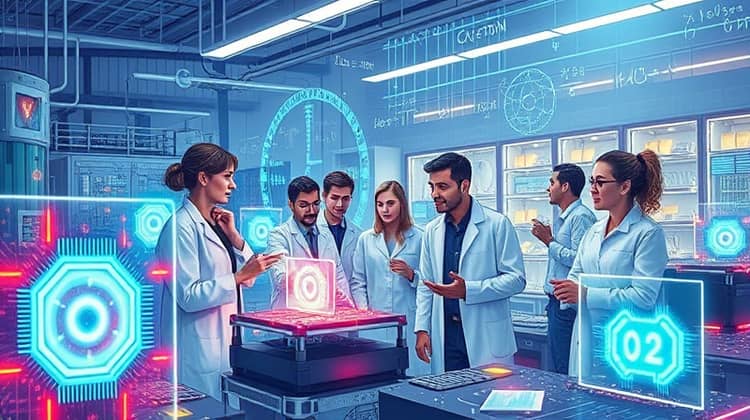In the ever-evolving world of technology, computer hardware continues to experience remarkable developments that redefine performance and user experience. Recent advancements have been heavily influenced by shifts in consumer demands, advances in technology, and the growing importance of artificial intelligence and data processing.
This article explores the latest trends in computer hardware, focusing on significant areas such as artificial intelligence, graphics processing, quantum computing, storage solutions, energy efficiency, modularity, and the internet of things. Each section delves into specific innovations and their implications for both consumers and businesses.
1. Rise of Artificial Intelligence Hardware

The emergence of artificial intelligence (AI) has created a demand for hardware capable of handling complex computations, leading to the rise of specialized AI hardware. Companies are increasingly investing in processors designed specifically for deep learning and data analysis, enhancing speed and efficiency in data-driven tasks.
This trend signifies not only an evolution in processing power but also a shift in the way we think about hardware design, integrating capabilities that were previously thought to rely solely on traditional CPU architectures.
- Development of AI-focused chips like Google's TPUs and NVIDIA's A100 GPUs
- Integration of AI accelerators in personal devices for smarter processing
- Collaboration of tech giants to create standardized AI hardware platforms
2. Advancements in Graphics Processing Units (GPUs)

Graphics Processing Units have grown beyond rendering graphics for gaming; they are now central to processing data for machine learning, virtualization, and other computationally intensive tasks. The advancement in GPUs allows for better multitasking and faster computations, helping professionals in fields such as gaming, design, and scientific research.
Modern GPUs incorporate various technologies like ray tracing and AI-enhanced graphics to boost realism and performance in applications, directly impacting user experience and application efficiency.
- Introduction of GPUs with real-time ray tracing capabilities
- Enhanced memory bandwidth to support high-resolution displays
- Support for multi-GPU configurations for improved processing power
3. Quantum Computing Breakthroughs

Quantum computing has reached a pivotal point where breakthroughs are paving the way for more practical applications. This technology utilizes the principles of quantum mechanics to perform calculations beyond the reach of classical computers, thus revolutionizing fields like cryptography and complex modeling.
As researchers and tech companies explore this new frontier, we are witnessing the first steps towards democratizing quantum technologies and integrating them into everyday problem-solving scenarios.
- Development of quantum processors with higher qubit counts
- Improvements in error correction techniques for stable quantum computing
- Partnerships between academia and industry to accelerate quantum research
4. Solid State Drives (SSDs) Becoming the Standard

In the storage sector, Solid State Drives (SSDs) are rapidly becoming the standard due to their superior speeds, durability, and power efficiency compared to traditional Hard Disk Drives (HDDs). This shift has significant ramifications for how data is accessed and processed in various devices, from PCs to enterprise servers.
With decreasing costs and increasing storage capacities, SSDs are now an attractive option for consumers and enterprises seeking improved performance and reliability in their data storage.
- Adoption of NVMe SSDs for enhanced data transfer speeds
- Increased capacity options ranging from several gigabytes to multiple terabytes
- Integration of SSDs in budget laptops and desktops, making them widely accessible
5. Increased Focus on Energy Efficiency

As environmental concerns grow, the tech industry is placing a greater emphasis on energy-efficient hardware solutions. Manufacturers are designing components with lower power consumption while maintaining high performance levels, aligning with sustainability goals and regulatory requirements.
This commitment to energy efficiency not only reduces operational costs for consumers but also contributes to the overall reduction of the carbon footprint.
- Implementation of power-saving technologies like adaptive frequency scaling
- Transition to energy-efficient manufacturing processes
- Development of low-power devices that meet performance demands while saving energy
6. Modular and Upgradeable Systems

With the continuous evolution of technology, there is a demand for modular and upgradeable computer systems that allow consumers to easily replace or enhance specific components. This approach extends the lifespan of devices, reduces electronic waste, and offers flexibility in performance capabilities.
Modular systems cater particularly well to gamers and professionals who require customizable setups tailored to their particular needs.
- Designs that allow for easy upgrades to CPUs, GPUs, and RAM
- Promoting DIY builds among tech enthusiasts and consumers
- Encouragement from manufacturers to adopt modular design principles
7. The Internet of Things (IoT) and Edge Computing

The Internet of Things represents a significant trend, where everyday devices are interconnected, enabling seamless data exchange and smart functionality. This trend is complemented by the rise of edge computing, which processes data close to its source instead of relying on centralized cloud systems.
The integration of IoT and edge computing technologies allows for more efficient data management, faster decision-making, and improved security across a range of applications from smart homes to industrial automation.
- Expansion of IoT devices in home and industrial settings
- Increased investment in edge computing infrastructure
- Development of protocols ensuring secure data transmission in IoT ecosystems
8. Customization and Personalization in Consumer Hardware

The latest trends in consumer hardware showcase a growing demand for customization and personalization, allowing users to tailor devices to their specific tastes and requirements. From modifiable PCs to phones with customizable skins, the market sees a shift towards offering more user-specific options.
Furthermore, this trend isn’t limited to aesthetics; it extends into functionality, with consumers now seeking devices that cater to their individual workflows, preferences, and experiences.
Conclusion

In conclusion, the latest trends in computer hardware highlight a significant evolution in technology that aligns with consumer needs and advances in technology. From AI-specific hardware and powerful GPUs to sustainable solutions and customizable systems, the industry is moving towards enhancing user experience, performance, and efficiency.
As these trends continue to unfold, we can expect an exciting future filled with innovative solutions that not only transform how we interact with technology but also promote a more sustainable approach to hardware development.














